В.Кондратьев Самолеты первой мировой войны
"РОЛАНД " D.II/D.III / ROLAND D.II/D.III
После восстановления предприятия на нем запустили в серию улучшенную модификацию истребителя - "Роланд" D.II. Верхнее крыло у него было приподнято и установлено на невысоком пилоне, чтобы улучшить обзор вниз. Вооружение усилено на один пулемет, а два бортовых радиатора заменили одним, размещенным на верхнем крыле.
D.II выпускался с октября 1916 года, а с декабря начал поступать на фронт. В ноябре появилась очередная модификация D.IIa, оснащенная двигателем "Аргус" As.III мощностью 180 л.с. Вскоре D.IIa сменил D.II на линии сборки.
Всего на фирмах LFG и "Пфальц" построено 70 экземпляров D.II и 300 D.IIa. Выпуск прекращен в феврале 1917 г.
<...>
Самолеты "Роланд" отличались высокой прочностью конструкции и хорошими скоростными данными, но по остальным показателям они уступали "Альбатросу". Кроме того, двигатель "Аргус" оказался недостаточно надежным и постоянно недодавал мощности. Из-за этого "роланды" не получили широкого распространения на западе, но часть машин использовалась на восточном фронте, где некоторые из них были сбиты в воздушных боях русскими летчиками. Две трофейные машины применялись в российской авиации.
Шесть экземпляров D.II и столько же D.III были переданы Болгарии и воевали в составе болгарских ВВС на македонском фронте.
МОДИФИКАЦИИ
D.II; двигатель "Мерседес", 160 л.с. Построено 70 штук в октябре-ноябре 1916 г.
D.IIа; двигатель "Аргус", 180 л.с. Построено 370 экз. в ноябре 1916 - феврале 1917 гг.
ВООРУЖЕНИЕ:
2 синхр. LMG 08/15 "Шпандау".
ЛЕТНО-ТЕХНИЧЕСКИЕ ХАРАКТЕРИСТИКИ
Размах, м 8,94
Длина, м 6,85
Площадь крыла, кв.м 22,80
Сухой вес, кг 685
Взлетный вес, кг 915
Скорость максимальная, км/ч 180
Время подъема на высоту
2000 м, мин 6,0
5000 м, мин 23,0
Потолок, м 5000
А.Александров, Г.Петров Крылатые пленники России
Летая с тем же двигателем "Мерседес" 160 л. с. или с "Аргусом" 180 л. с, сухопутные истребители "Роланд Д. II" или "Роланд Д. IIа" постройки фирмы "Л. Ф. Г." превосходили по скорости морской "Альбатрос В. 4" всего примерно на 10 км/ч, достигая максимального показателя 170 км/ч. Им не помогала их, казалось бы, обтекаемая форма - наоборот, изящное сочленение верхнего крыла и фюзеляжа затрудняло обзор, так необходимый в бою. Добавим сюда тяжелое управление, и станет понятно, почему германские пилоты-истребители не любили эту модель, впервые испытанную в октябре 1916 г., а затем произведенную в количестве до 430 экземпляров компаниями "Л. Ф. Г." и "Пфальц". Таким образом, попытки улучшить аналогичный предыдущий тип, Д. I, спроектированный инженерами Танценом и Хофманом (Tantzen, Hoffmann) и неофициально прозванный "акулой", не достигли цели. Фирму "Л. Ф. Г." - "Люфтфарцойг Гезельшафт" (Luftfahrzeug Gesellschaft), обязанную своим рождением в 1912 г. в том числе и крупповскому капиталу, не надо путать с "Эльфауге". Возможность такой неразберихи была очевидна с самого начала и потому компания учредила торговую марку "Роланд" в дополнение к основному имени. Не испытывая необходимости бросать на Восточный фронт новейшие и совершеннейшие истребители, немцы запросто обходились там такими не слишком удачными аппаратами, как "Роланд", которые иногда становились добычей наших летчиков. 9 сентября 1917 г. подпоручик А. Н. Свешников из 7-го корпусного авиаотряда, 2-я истребительная группа, атаковал на своем "Спаде 7" французской постройки неприятельский аэроплан, который после непродолжительного 15-минутного боя спустился в районе наших передовых позиций. Его пилот убежал к своим, тогда как "Роланд Д. IIа" (с "Аргусом"), с заводским номером 539, оказался в плену, чем воспользовался неизвестный фотограф, запечатлевший событие во многих деталях. Вот Свешников (слева) стоит у пропеллера со штампом фирмы-изготовителя "Аксиаль"; на снимке отлично видны также кок винта, капот двигателя, выхлопной коллектор и т. д. (72, а). Вот почти та же сцена, но аппарат показан целиком (72, б); затем мы можем рассмотреть его хвост, погруженный на телегу, и шасси с поврежденным левым колесом (72, в). Отсутствие креста на фюзеляже является следствием распространенного среди летчиков той эпохи пристрастия, когда детали обшивки, приборы и прочие предметы становились своеобразными сувенирами победителя, подтверждавшими его удачу. Следы такой деятельности хорошо заметны на правом борту. Не менее интересны двухцветный - коричневый с зеленым - камуфляж верхних сторон аппарата, спрятанные в крыло радиаторы, альтиметр на центральном пилоне и т. д. (73). К сожалению, нам не удастся разглядеть 2 синхронизированных пулемета, чего не скажешь о следе от русской пули на левом борту фюзеляжа - она попала точно в крест (74). Согласно рапорту, причиной вынужденной посадки неприятеля было поражение топливного и масляного резервуаров. Еще один "Роланд Д. II" с загадочной белой полосой на корпусе и с демонтированными крыльями в августе 1917 г. находился в плену в Каменец-Подольске (75), а в 1922-1923 гг. один "Роланд Д. IIа" с номером 301 числился во 2-м авиаотряде истребительной эскадрильи в Киеве и потом во 2-м отдельном истребительном авиаотряде в Харькове (76). На крыло самолета облокотился весьма франтоватый пилот с орденом Красного Знамени на груди и с компасом на правой ноге, но, пожалуй, больший интерес представляет совершенно необычный рисунок на фюзеляже: если хорошенько присмотреться, то можно увидеть, скорей всего, огненно-красного цвета черта, набросившегося на рабоче-крестьянскую "серпасто-молоткастую" звезду, а хвост черта образует некий замысловатый узор, включающий, вероятно, букву А. Видимо, тот же единственный "Роланд" Красной авиации, замечательный, помимо всего прочего, своим самодельным ветровым козырьком, изображен на следующем снимке (77), сделанном, вероятно, в 1924 г. в одном из помещений 2-й постоянной авиабазы. По имеющейся информации, он летал с двигателем "Опель" 180 л. с.
O.Thetford, P.Gray German Aircraft of the First World War (Putnam)
L.F.G. Roland D II and IIa
With the success of the Roland C II and quantity production established, thought was given by the L.F.G. design staff, led by Dipl. lng. Tantzen, to the production of a single-seater to a similar formula. The resultant aircraft, the L.F.G. Roland D I, first flown in July 1916, had an unmistakable resemblance to its forebear, although its lines were finer and its general appearance was much slimmer, which, without doubt, gave rise to the name it was given - "Haifisch" (Shark).
As in the C II, the fuselage encompassed the full depth of the gap, but the attachment of the upper wing panels was modified from the shoulder position to a central one, where they joined a low extruded pylon. Some revision of the tail surfaces, with the addition of a blister fin round the tail skid; further cleaning up of the centre-section attachment and replacement of the "ear"-type radiators, brought forth the D II, which first flew in October 1916.
Power unit of both the D I and D II was the 160 h.p. Mercedes D III. Alternative installation of the Argus As III of 180 h.p. in the D II airframe produced the D IIa; there were other minor modifications, mainly in the lightening of the structure. Engines were well buried in the nose, only the upper part of the foremost cylinders protruding above the fuselage shell. Twin Spandau machine-guns were positioned either side of the engine inside the fuselage, and collector manifolds were fitted on the starboard side of the motor exhausting sideways. A large, near hemispherical, metal spinner enclosed the propeller hub, and immediately aft of the airscrew was a metal cowling band extending the full diameter of the fuselage and slotted with characteristic Roland cooling vents. The remainder of the fuselage, with the exception of the metal engine-access panels, was of wooden construction based on very light oval plywood formers with spruce longerons, and spirally wrapped with a double three-ply skin only 1.5 mm. thick, which, in turn, was fabric covered. The vertical fin was also of wooden construction, built integral with the fuselage and surfaced with a plywood skin. Attachment of the wooden trapezoidal-shaped tailplane was unique. The inboard ends of the leading edge were hollowed and embedded on the ends of a timber member which transversed the fuselage and projected about 18 in. either side, thereby ensuring a rigid fixture. Additionally the tailplane was braced to the fin with two light streamlined steel struts. The horn-balanced control surfaces were of steel tube framing with fabric covering.
In the cable-braced wing structure, which was quite conventional, a return made to the more orthodox type of parallel interplane struts, as compared with the C IIs I-struts. The unstaggered wings were of equal chord, the upper of slightly greater span than the lower; they were rigged without dihedral, but had some 1 1/2 ° of sweep. There was only a slight rake to the almost square-cut tips. Based on the usual twin-spar arrangement, the spars were of hollow box construction and braced with four steel-tube compression members to each panel. The ply ribs were fretted with lightening holes and capped with ash flanges. False ribs were positioned between the main ribs and extended as far aft as the rear spar. Fabric-covered ailerons were unbalanced, of parallel chord and actuated by torque tubes running through the wings, which, in turn, were operated by push-rods connected to cranks at the inboard ends. The radiator of aerofoil shape was positioned centrally in the centre-section, and a gravity fuel tank was offset to port in the upper wing panel.
A conventional undercarriage chassis with streamline steel-tube vees was fitted. The axle and twin spreader bars were enclosed in a streamline fairing and the wheels were sprung with elastic cord.
Although cut-outs were made in the upper wing panels, forward view from the cockpit was very poor, a serious disadvantage in a fighter. Despite this, some 300 of the type (including D Is) were eventually built. The majority of these aircraft were constructed under licence by the Pfalz Flugzeug-Werke and not by the parent L.F.G. firm.
In an endeavour to improve forward view, the Roland D III was developed with a conventional centre-section, but saw only limited production, as it was already outclassed by other manufacturers' products. Roland D II and IIas did not usually form the complete establishment of any Jagdstaffeln when they came into service in the early months of 1917. Most seem to have appeared on the French sector of the Western Front, as they do not feature in British combat reports. Several D IIs were on the establishment of Jasta 27 at the time it was commanded by Hermann Goring during 1917 one being regularly flown by Lt. Karl Riehm. One unit that was completely equipped with Roland D IIs in 1917 was Marine Feldjagdstajfel 2. This unit was subsequently destroyed by a British bombardment, whereupon the Staffel was re-equipped with Alb. D IIIs. Jasta 25 in the Balkans in 1917 was also equipped with D IIs prior to receiving Albatroses.
Although having considerable speed, the Roland D IIs were not popular aircraft due to the heaviness of the controls, a considerable disadvantage in a fighter type.
TECHNICAL DATA
Description: Single-seat fighting scout.
Manufacturers: Luftfahrzeug Gesellschaft m.b.H. Berlin-Charlottcnburg (Rol.).
Sub-contractors: Pfalz Flugzeug-Werke G.m.b.H. Speyer am Rhein (Pfal.).
Power Plant:
One 160 h.p. Mercedes D III six cylinder in-line water-cooled engine (D II.)
One 180 h.p. Argus As III six cylinder in-line water-cooled engine (D IIa.)
Dimensions:
Span, 8.94 m. (29 ft. 4 in.). Length, 693 m. (22 ft. 8 7/8 in.). Height, 3.11 m. (10 ft. 2 3/8 in.). Area, 22.8 sq m. (246.25 sq.ft.). (D II.)
Span, 8.9 m. (29 ft. 2 1/2 in.). Length, 6.95 m. (22 ft. 9 5/8 in.). Height, 2.95 m. (9 ft. 8 1/8 in.). Area, 22 sq.m. (237.6 sq.ft.). (D IIa.)
Weights:
Empty, 715 kg. (1,573 lb.). Loaded, 954 kg. (2,098.8 lb.). (D II.)
Empty, 635 kg. (1,397 lb.). Loaded, 795 kg. (1,749 lb.). (D IIa.)
Performance: Maximum speed, 170 km.hr. (105 m.p.h.). Climb, 5,000 m. (16,400 ft.) in 23 min., D II; 5,000 m. (16,400 ft.) in 20 min., D IIa.
Armament: Two fixed Spandau machine-guns firing forward.
W.Green, G.Swanborough The Complete Book of Fighters
LFG ROLAND D II Germany
While the pilot of the D I enjoyed an excellent upward view, the view downwards, impeded by the somewhat rotund fuselage and twin ear radiators, left much to be desired and was the subject of much criticism. Dipl-Ing Tantzen and his team therefore undertook some redesign, which resulted in the D II. Whereas the upper decking of the D I fuselage was faired into the upper wing, that of the D II was cut down and a narrow pylon faired into the wing, the lateral radiators being discarded in favour of a radiator in the upper wing. The D II proved more difficult to fly and somewhat less manoeuvrable than the Albatros D I, and had a tendency to enter a spin from a steep bank. Nonetheless, in October 1916, LFG received a contract for 30 D II fighters powered by the 160 hp Mercedes D III and armed with two 7,9-mm LMG 08/15 guns. A contract for an additional 100 aircraft was awarded to the Pfalz Flugzeugwerke in the following month. With the availability of the new 180 hp Argus As III water-cooled engine, this power plant was mated with the D II airframe and production continued as the D IIa, of which 40 were ordered in November 1916, 100 in January 1917 and a final 50 in the following March. Performances of the DII and Ha were essentially similar, but the Argus engine of the latter unexpectedly demonstrated a severe power loss at higher altitudes, seriously restricting the fighter’s usefulness. The D II reached the Front in February 1917, strength peaking at 97 aircraft in April and tapering off until the type disappeared from the first line inventory in October. The D IIa reached the Front in June 1917, in which month the inventory reached 128 aircraft, and it was withdrawn from first line service in December 1917. Data relate to the D II.
Max speed, 103 mph (165 km/h).
Time to 16,405 ft (5 000 m), 23 min.
Empty weight, 1,400 lb (635 kg).
Loaded weight, 1,797 lb (815 kg).
Span, 29 ft 3 7/8 in (8,94 m).
Length, 22 ft 8 3/4 in (6,93 m).
Height, 10 ft 2 1/2 in (3,11 m).
Wing area, 245.21 sqft (22,78 m2).
J.Herris Roland Aircraft of WWI (A Centennial Perspective on Great War Airplanes 9)
Roland D.II & D.IIa
The Roland D.II was a development of the D.I designed to improve the pilot's field of view forward and downward. The upper wing was now mounted on a small pylon and the side-mounted 'ear' radiators of the D.I were replaced with an airfoil radiator mounted in the upper wing. Both changes improved the pilot's field of view forward and downward. Engine and armament remained the same as the D.I, a 160 hp Mercedes D.III engine and two synchronized LMG 08/15 machine guns buried in the nose.
Despite these improvements, the maneuverability and flying characteristics of the D.II were no better than the D.I. The competing Albatros fighters were somewhat easier to fly and more maneuverable than the Rolands and were much more successful in combat.
Regardless, LFG received a contract for 30 D.II fighters in October 1916. In November Pfalz was awarded a contract for 100 of these fighters as the Pfalz D.II, later re-designated Roland D.II(Pfal).
When the somewhat more powerful 180 hp Argus As.III engine became available, it was used in the D.II to create the D.IIa. This had the additional benefit of freeing up more Mercedes engines for the production of Albatros fighters. The Roland D.IIa was ordered in greater quantity than the D.I; 40 were ordered in November 1916, 100 in January 1917, and a final 50 in March 1917.
The D.IIa had an overall performance similar to the D.II with Mercedes engine, but the Argus engine experienced a significant power loss at higher altitudes, significantly reducing the rate of climb of the Roland D.IIa above 3,000 meters. This was a serious limitation of the D.IIa as a fighter and it was never as successful as the Albatros fighters.
Roland D.II/IIa Production
Ordered Qty Serials Notes
April 1916 2 113-114/16 Prototypes
Oct. 1916 30 2800-2829/16 D.II
Nov. 1916 40 3701-3740/16 D.IIa
Nov. 1916 60 2830-2929/16 D.II A D.IIa,
Nov. 1916 40 Pfalz-built
Jan. 1917 100 150-199/17, 450-499/17 D.IIa
Jan. 1917 100 300-399/17 D.IIa, Pfalz-built
Roland D.II Specifications
Engine: 160 hp Mercedes D.III
Wing: Span (upper) 8.90 m
Span (lower) 8.50 m
Chord (upper) 1.45 m
Chord (lower) 1.45 m
Gap 1.35 m
Area 22.78 m2
General: Length 6.93 m
Height 3.11 m
Empty Weight 635 kg
Loaded Weight 815 kg
Maximum Speed: 180 kmh
Climb: 1000m 3 min
2000m 6 min
3000m 10 min
4000m 15 min
5000m 23 min
Roland D.IIa Specifications
Engine: 180 hp Argus As.Ill
Wing: Span (upper) 8.90 m
Span (lower) 8.50 m
Chord (upper) 1.45 m
Chord (lower) 1.45 m
Gap 1.35 m
Area 22.78 m2
Maximum Speed: 180 kmh
Climb: 1000m 3 min
2000m 6.5 min
3000m 11 min
4000m 18 min
5000m 29 min
J.Herris Pfalz Aircraft of WWI (A Centennial Perspective on Great War Airplanes 5)
Pfalz D.II and D.IIa
The Roland D.I fighter was quickly superceded in production by the Roland D.II, and Pfalz built the Roland D.II fighter under license as the Pfalz D.II. Pfalz received a production contract for 100 Pfalz D.II fighters, serial numbers 2830-2929/16, in November 1916. The Pfalz D.II was also powered by the 160 hp Mercedes D.III engine and was armed with two synchronized 'Spandau' LMG 08/15 machine guns. (The guns were popularly called 'Spandau' by Allied pilots after the Spandau arsenal in Berlin that manufactured them.) Because the Albatros series of fighters had priority for the 160 hp Mercedes D.III engine, the Roland D.IIa was built using the new 180 hp Argus As.III engine, and Pfalz received a further order for 100 Pfalz D.IIa fighters, serial numbers 300-399/17, in January 1917. After Idflieg rationalized aircraft designations in February 1917, these aircraft were redesignated Roland D.II(Pfal) and Roland D.IIa(Pfal), respectively.
Pfalz D.II (Roland D.II (Pfal)) Specifications
Engine: 160 hp Mercedes D.III
Wing: Span (upper) 8.90 m
Span (lower) 8.50 m
Chord (upper) 1.45 m
Chord (lower) 1.45 m
Gap 1.35 m
Area 22.8 sq m
General: Length 6.93 m
Height 3.11 m
Empty Weight 635 kg
Loaded Weight 815 kg
Maximum Speed: 180 kmh
Climb: 1000m 3 min
2000m 6 min
3000m 10 min
4000m 15 min
5000m 23 min
Журнал Flight
Flight, July 12, 1917.
SOME 1917 TYPE GERMAN AEROPLANES.
The Roland Chaser, D. II.
Differs somewhat from the Roland two-seaters in several respects. It is chiefly characteristic on account of the peculiar arrangement of the top plane attachment, which secures the upper wing spars to an enclosed upward projection of the body. Constructionally the body is of the true monocoque type, without internal bracing. It is of rounded section, and throughout the whole machine great care has been taken to do away with any sharp corners or angles, the object evidently being to reduce head resistance to a minimum. The main planes, of which the upper measures 29 ft. 6 ins. and the lower 28 ft. span, have no dihedral, bat are swept back as was once the custom in a large number of German aeroplanes. Ailerons are fitted to the top plane only, and are operated Nieuport fashion by cranks on tubs running along the rear spar. The chord of both planes is the same, 4 ft. 9 ins. The stabilising plane and the vertical fin are covered with three-ply wood, and both rudder and elevator are partly balanced by triangular projections, as appears now to be the mode in Germany. The engine fitted is a 175 h.p. Mercedes, with the exhaust pipes bent outward and backwards as on the Albatros. The radiator is incorporated in the centre of the top plane. Two machine guns are fitted, one on each side of the engine, and, of course, with the usual interrupting gear. The weight of the machine empty is 1,450 lbs.
Flight, July 11, 1918.
THE ROLAND SINGLE-SEATER CHASER, D. II.
THE single-seater Roland biplane, D. II, which made its first appearance about March, 1917, is still frequently encountered by our pilots, especially on the Eastern sectors. It has therefore seemed to us of interest to give a description of it with detailed drawings. The dimensions of the Roland D. II are very small :-
Span of upper plane 8.90 m.
Span of lower plane 8.50 m.
Length overall 6.95 m.
Height 2.95m.
Its weight - 827 kilogs. - with full tanks is slightly greater than that of the Albatros D. III chaser. The lifting surface being 23 sq. m., the wing loading is 36 kg./sq. m. (7.2 lbs./sq. ft.).
Fuselage.
The construction of the fuselage, and its peculiar shape, merit special attention. Being built entirely of three-ply wood and covered with fabric, it is of the monocoque type, of oval section, and terminates at the stern in a vertical knife edge. The construction is excessively light, the framework consisting of very thin longerons running through the whole length of the body, the curves of which they follow. Rigidity is only provided by the ply wood, made in two halves joined along the middle of the top and bottom. The total thickness of the six layers is only 1.5 mm. From the pilot's seat to the tail there are only four formers of very small thickness.
Between the pilot's seat and the motor the fuselage forms a projection tapering upwards to form at its upper extremity an edge 0.11 m. wide, to which are attached the radiator and the top plane. The top plane is cut away to accommodate the radiator. This arrangement of an upward projection of the body itself takes the place of the cabane. On the lower part of the fuselage, and built integrally with it, there are the roots to which the two halves of the lower plane are attached. At the rear the tail skid, of wood with a shoe of metal, pierces the fuselage, and is supported on a projection of ply wood similar to that employed on the Nieuport.
The pilot is placed very high, and has in front of him two wind screens, one on each side of the central structure carrying the upper plane. The view in a forward direction being thus divided would appear to be inferior to that obtainable in other types of machines.
Planes.
The planes are of trapezoidal plan form, of unequal span, without stagger and dihedral angle, but with a sweep-back of 1.50. The chord, which is uniform, is 1.45 m. and the gap 1.34 m. The ribs are at right angles to the leading edge. As the inter-plane struts are secured to the spars over the same rib, it follows that in the front view the struts do not come quite in line. The spars of the upper plane, which are of spruce, are spaced 0.83 m. apart, the front spar being 0.13 m. from the leading edge. The ribs, of which there are 12, are of I section with flanges of ash. They are spaced about 0.37 m. apart. In the middle of each interval there is a false rib running from the leading edge to the rear spar. In each wing there are four compression members in the form of steel tubes 25 mm. diameter. These tubes are evenly spaced, the distance between them being 1.30 m., and are braced by 3 mm. piano wire. Between the front spar and the leading edge there are two tapes running parallel to the spars and crossing alternately over and under consecutive ribs. Two more tapes are similarly arranged between the spars. Certain corners are stiffened by reinforcement with ply wood. Each of the upper planes carries an aileron, which is not balanced and of equal chord throughout. A strip of three-ply wood, under the fabric, covers and protects the hinge fixed on the rear spar. The aileron measures 1.82 m. in length and has a chord of 0.42 m. Its leading edge is a steel tube of 30 mm. diameter. The aileron cranks are operated, as in the Nieuport, by two vertical tubes. In the left top plane is mounted a petrol service tank. Openings in each of the halves of the top plane accommodate the radiator. The upper planes are attached direct to the highest portion of the fuselage by means of special bolts resembling somewhat those used on the L.V.G. C. IV.
The lower planes are constructed in much the same manner as the top ones. The spars are similarly arranged and are consequently the same distance apart. In each wing there are 10 ribs, of which nine measure 0.01 m. and the last one 0.025 m. Between the ribs are false ribs measuring 10 mm. The internal wing bracing is the same as that of the top plane, but the distribution of the four steel tube compression struts (of which one is 20 mm. and the others 25 mm.) is somewhat different. From the first to the second is 1.17 m., from the second to the third is 1.13 m., and from the third to the fourth 1.11 m. The lower planes are attached to wing roots built integrally with the fuselage. The angle of incidence is 4# at the second rib and 3# at the seventh. The inter-plane struts are in the form of steel tubes 0.025 m. diameter, stream-lined with a wood fairing which brings their depth to 0.09 m.
The Tail.
The shape of the tail can be seen from the plane view of the machine. The fixed tail plane is built of wood, while the two elevator flaps are constructed entirely in metal.
A note should be made of the attachment of the tail plane to the body. The leading edge of the tail plane is hollowed out, and into the hollow space thus formed fits a piece of wood which runs across the fuselage and the ends of which project 0.50 m. on each side. Further rigidity is given to the structure by two stream-line tubes running from the tail plane to the rudder hinge on the vertical fin. The rudder, which is roughly rectangular with rounded corners and has a forward projection for balancing, is built up of steel tubes, while the fin, which is made integral with the body, is of three-ply wood.
The elevator cables, which are attached to a central crank lever, are enclosed inside the body except for the last meter or so from the stern.
Engine.
The engine fitted on the Roland D. II is a 160 h.p. Mercedes six-cylinder vertical engine. The exhaust collector is nearly horizontal, and is placed on the starboard side. In addition to the gravity tank in the top plane there is a main petrol tank measuring 70x70x25 under the rudder bar. The airscrew having been smashed it has not been possible to identify it. It had its boss enclosed in the usual "spinner."
Armament.
Two fixed Spandau guns are operated by the motor. They are mounted one on each side, and do not project through the fuselage covering until just at the extreme front.
Undercarriage.
The undercarriage is formed by two pairs of Vee struts, braced diagonally by two crossed cables. Their attachment to the fuselage occurs at two sloping formers. The axle, which is placed between two cross <...> is enclosed in a stream-line casing. The track <...>.75 m. The wheels measure 760 by 100. The shock absorbers are of rubber.
It has been said of the Roland D II that owing to its light construction the fuselage is apt to get out of shape, and that it has a tendency to spin. As up to the present no test of this machine has been possible, our opinion can only be based on the testimony of our aviators. From this it appears that this machine, of new conception, must be counted among the best of German chasers. The Roland D. II single-seater, enters still into the composition of certain enemy squadrons.
 |
J.Herris - Roland Aircraft of WWI /Centennial Perspective/ (9)
|
| Roland D.II prototype
|
 |
J.Herris - Roland Aircraft of WWI /Centennial Perspective/ (9)
|
| Roland D.II of Jasta 27
|
 |
J.Herris - Roland Aircraft of WWI /Centennial Perspective/ (9)
|
| Roland D.ll, unit unknown
|
 |
J.Herris - Roland Aircraft of WWI /Centennial Perspective/ (9)
|
| Roland D.II of Jasta 32.
|
 |
J.Herris - Roland Aircraft of WWI /Centennial Perspective/ (9)
|
| Roland D.II on the Eastern Front.
|
 |
J.Herris - Pfalz Aircraft of WWI /Centennial Perspective/ (5)
|
| Pfalz D.II, later Roland D.II(Pfal), wears the usual Roland D.II factory finish of green and brown upper surfaces and light blue undersurfaces. The white fuselage band is an individual marking.
|
 |
J.Herris - Pfalz Aircraft of WWI /Centennial Perspective/ (5)
|
| Pfalz D.II, later Roland D.II(Pfal), wears the usual Roland D.II factory finish of green and brown upper surfaces and light blue undersurfaces. The white zigzag on the fuselage is an individual marking.
|
 |
J.Herris - Development of German Warplanes in WWI /Centennial Perspective/ (1)
|
Pfalz D.II, later Roland D.II(Pfal), wears the usual Roland D.II factory finish of green and brown upper surfaces and light blue undersurfaces. The black band with white '10' is an individual marking.
This Roland D.II(Pfal) flew with Kest 4 on the Eastern Front. Using the same engine and weapons as the Albatros fighters, the Roland fighters were strong and fast but had mediocre maneuverability and handling characteristics, and the pilot's field of view was poor. As a result the Rolands served in relatively small numbers while the Albatros was built in great quantity.
|
 |
J.Herris - Roland Aircraft of WWI /Centennial Perspective/ (9)
|
| Roland D.II Edith serving with Jasta 15
|
 |
В.Обухович, А.Никифоров - Самолеты Первой Мировой войны
|
| LFG Роланд D II
|
 |
J.Herris - Roland Aircraft of WWI /Centennial Perspective/ (9)
|
| Roland D.II(Pfal), unit unknown.
|
 |
В.Кондратьев - Самолеты первой мировой войны
|
| Роланд D.II, пилот - вицефельдфебель Г.Физлер, весна 1918г.
|
 |
J.Herris - Roland Aircraft of WWI /Centennial Perspective/ (9)
|
| Roland D.IIa of Jasta 25 in Macedonia. Most likely this was the aircraft flown by 19-victory ace Vzfw. Gerhard Fieseler.
|
 |
J.Herris - Roland Aircraft of WWI /Centennial Perspective/ (9)
|
| Roland D.IIa of Jasta 27 flown by Unteroffizier Stein.
|
 |
J.Herris - Roland Aircraft of WWI /Centennial Perspective/ (9)
|
| Roland D.II with the coat-of-arms of the city of Halle an der Saale
|
 |
J.Herris - Roland Aircraft of WWI /Centennial Perspective/ (9)
|
| Roland D.IIa of Jasta 31 flown by Vzfw. Harling.
|
 |
J.Herris - Roland Aircraft of WWI /Centennial Perspective/ (9)
|
| Roland D.IIa of Jasta 32 flown by Vzfw. Paul Raetsch.
|
 |
J.Herris - Roland Aircraft of WWI /Centennial Perspective/ (9)
|
| Roland D.IIa serving on the Eastern Front, unit unknown
|
 |
J.Herris - Roland Aircraft of WWI /Centennial Perspective/ (9)
|
| Roland D.IIa(Pfal) serving on the Eastern Front, unit unknown.
|
 |
J.Herris - Roland Aircraft of WWI /Centennial Perspective/ (9)
|
| Roland D.IIa of the Jastaschule at Valenciennes.
|
 |
J.Herris - Roland Aircraft of WWI /Centennial Perspective/ (9)
|
| Roland D.IIa of the Bulgarian Air Service.
|
 |
В.Кондратьев - Самолеты первой мировой войны
|
| "Роланд" D.IIa, пилот Ханс Пиппарт, Галиция, лето 1917г.
|
 |
O.Thetford, P.Gray - German Aircraft of the First World War /Putnam/
|
L.F.G. Roland D II prototype, powered by a 160 hp Mercedes D.III engine, October 22 1916.
Improved forward and downward view from the cockpit was offered by the Roland D II.
|
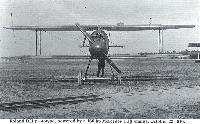 |
Сайт - Pilots-and-planes /WWW/
|
| The prototype Roland D.II on Oct. 22, 1916 in front of the LFG flight test hangar. An anemometer airspeed indicator is mounted on the upper left wing.
|
 |
J.Herris - Roland Aircraft of WWI /Centennial Perspective/ (9)
|
| Roland D.II prototype, powered by a 160 hp Mercedes D.III engine, October 22, 1916, in front of the LFG flight test hangar. An anemometer airspeed indicator is mounted on the upper left wing.
|
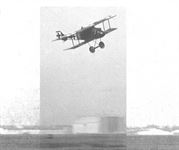 |
J.Herris - Roland Aircraft of WWI /Centennial Perspective/ (9)
|
| Roland D.II prototype in October 1916 flying over the Adlershof aerodrome in October 1916.
|
 |
J.Herris - Roland Aircraft of WWI /Centennial Perspective/ (9)
|
| Fresh from the Pfalz factory, and immaculate D.II (Pfal) 2872/16 poses for the camera before the application of camouflage in March 1917. The gravity fuel tank in the left wing was used on late-production aircraft.
|
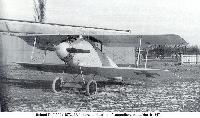 |
Сайт - Pilots-and-planes /WWW/
|
| Roland D.II(Pfal) 2872/16, before the application of camouflage paint, March 1917.
|
 |
J.Herris - Roland Aircraft of WWI /Centennial Perspective/ (9)
|
| The port radiator section of this Roland has been removed for maintenance, clearly showing its normal location.
|
 |
J.Herris - Roland Aircraft of WWI /Centennial Perspective/ (9)
|
| The Roland D.IIa had a slightly lengthened nose to accommodate its 180 hp Argus As.III engine. Just below the aileron control rod is the Roland logo.
|
 |
J.Herris - Roland Aircraft of WWI /Centennial Perspective/ (9)
|
| Roland D.II of Kest 4b shares an airfield with a Fokker D.II in the background.
|
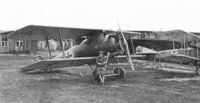 |
J.Herris - Roland Aircraft of WWI /Centennial Perspective/ (9)
|
| This Roland D.II(Pfal) has had some of its cowling panels removed for engine maintenance. An Albatros C.III is in the background.
|
 |
J.Herris - Roland Aircraft of WWI /Centennial Perspective/ (9)
|
| A Roland-built Roland D.II runs up its engine in preparation for take off.
|
 |
В.Кондратьев - Самолеты первой мировой войны
|
| "Роланд" D.II, построенный на заводе "Пфальц".
|
 |
J.Herris - Roland Aircraft of WWI /Centennial Perspective/ (9)
|
| This Roland D.II fighter carried two broad white fuselage bands as identify markings.
|
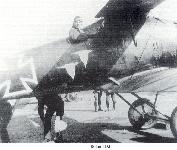 |
Сайт - Pilots-and-planes /WWW/
|
| Roland D.II
|
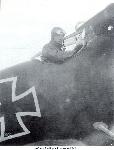 |
Сайт - Pilots-and-planes /WWW/
|
| Roland D.II with Lt. Anslinger.
|
 |
J.Herris - Roland Aircraft of WWI /Centennial Perspective/ (9)
|
| Vzfw. Richard Scholz in his Roland D.II at Flieger-Abteilung 21 on the Eastern Front. The instrument mounted above the altimeter appears to be a clock.
|
 |
Сайт - Pilots-and-planes /WWW/
|
| Jasta 27 lineup; a single Roland D.II is at left in a lineup consisting mostly of Albatros D.III and D.V fighters.
|
 |
J.Herris - Roland Aircraft of WWI /Centennial Perspective/ (9)
|
| Typical Eastern Front mixed unit with Roland D.IIs and an Albatros C.III.
|
 |
J.Herris - Roland Aircraft of WWI /Centennial Perspective/ (9)
|
| This unit lineup features a Roland-built D.II in the foreground followed by Halberstadt and Fokker biplanes.
|
 |
J.Herris - Roland Aircraft of WWI /Centennial Perspective/ (9)
|
| Roland D.II fighters in the field; two of them carry additional identity markings on their fuselages.
|
 |
J.Herris - Roland Aircraft of WWI /Centennial Perspective/ (9)
|
| Roland D.II Edith and Albatros D.III fighters of Jasta 15.
|
 |
J.Herris - Roland Aircraft of WWI /Centennial Perspective/ (9)
|
| Roland D.II fighters in wooden hangars with Flieger-Abteilung 15 on the Eastern Front. The men appear to be watching a flying display of some sort.
|
 |
J.Herris, J.Leckscheid - Fokker Aircraft of WWI. Vol.3: Early Biplane Fighters /Centennial Perspective/ (53)
|
| Fokker D.II at right with a Roland D.II at left. This photo is taken at a unit on the Eastern Front, possibly Galicia, Poland. Fighter aircraft were supplied in twos and threes to the Fliegerabteilungen there. The Roland D.II started replacing the lower-powered Fokkers in the early Spring of 1917.
|
 |
J.Herris - Roland Aircraft of WWI /Centennial Perspective/ (9)
|
| D.II fighters waiting for their next mission.
|
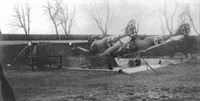 |
J.Herris - Roland Aircraft of WWI /Centennial Perspective/ (9)
|
| These Roland-built D.II fighters have been disassembled for transportation. They are in the gun pits having their guns sighted and tested.
|
 |
J.Herris - Roland Aircraft of WWI /Centennial Perspective/ (9)
|
| Roland D.IIs on the Eastern Front; the aircraft in front was built by Pfalz, and that in the rear was built by Roland. The distinguishing feature is the thickness of the iron cross insignia; the Pfalz-built aircraft has insignia of normal proportions, while Roland painted thicker crosses on the aircraft it produced.
|
 |
J.Herris - Roland Aircraft of WWI /Centennial Perspective/ (9)
|
| Prince Leopold of Bavaria (1848-1930) inspects a Roland D.II or D.IIa during flight operations at Brest Litovsk. By the time of these photos Leopold was the Supreme Commander of the German forces on the Eastern front (Oberbefehlshaber Ost). The thick cross insignia indicates the aircraft is Roland-built, and it has the letter "W" painted on the rear fuselage in two colors.
|
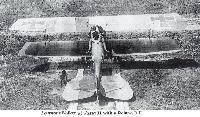 |
Сайт - Pilots-and-planes /WWW/
|
| Leutnant Wolker of Jasta 31 with a Roland D.II
|
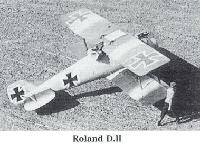 |
Сайт - Pilots-and-planes /WWW/
|
| Roland D.II
|
 |
J.Herris - Roland Aircraft of WWI /Centennial Perspective/ (9)
|
| Pfalz-built Roland D.II on the Eastern Front. From building Roland fighters Pfalz learned the Wickelrumpf wrapped-plywood fuselage construction that was used in all subsequent original Pfalz fighter designs.The Roland D.II replaced the ear radiators of the D.I with airfoil radiators for lower drag, and mounted the upper wing on a pylon for better visibility.
|
 |
J.Herris - Roland Aircraft of WWI /Centennial Perspective/ (9)
|
| French postcard of von Hausen's downed Roland D.II captured May 16, 1917.
|
 |
J.Herris - Roland Aircraft of WWI /Centennial Perspective/ (9)
|
| This Roland D.II, possibly of Jasta 32, carries a personal marking of two white birds on each side of the fuselage.
|
 |
J.Herris - Roland Aircraft of WWI /Centennial Perspective/ (9)
|
| This Roland D.II or D.IIa carries a checkerboard personal marking.
|
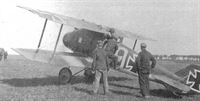 |
J.Herris - Roland Aircraft of WWI /Centennial Perspective/ (9)
|
| Roland D.II or D.IIa number 19 at Jastaschule I at Valenciennes.
|
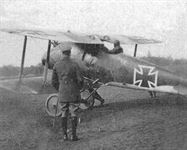 |
J.Herris - Roland Aircraft of WWI /Centennial Perspective/ (9)
|
| Roland D.II or D.IIa ready for take-off.
|
 |
J.Herris - Roland Aircraft of WWI /Centennial Perspective/ (9)
|
| This well-used Roland D.II(Pfal) appears to be at a fighter school.The numeral "8" appears below the cockpit and the lower left wing has been recovered in new fabric after a repair.
|
 |
J.Herris - Roland Aircraft of WWI /Centennial Perspective/ (9)
|
| A Roland-built Roland D.II starts is take-off run.
|
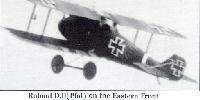 |
Сайт - Pilots-and-planes /WWW/
|
| Roland D.II(Pfal) on the Eastern Front
|
 |
J.Herris - Roland Aircraft of WWI /Centennial Perspective/ (9)
|
| Future ace Lt. Hans Pippart flying his Roland D.II(Pfal) while with Flieger-Abteilung 220 on the Eastern Front.
|
 |
J.Herris - Roland Aircraft of WWI /Centennial Perspective/ (9)
|
| Roland D.II in flight. If the Roland D.II was not the superior fighter the Albatros was, it was a welcome replacement for the primitive Eindecker fighters on the Eastern Front. The Roland was faster, better armed, and stronger than the Fokker and Pfalz Eindeckers and was significantly superior to them. It was also stronger than the V-strutter Albatros fighters and was not subject to the lower-wing structural failures that plagued those fighters.
|
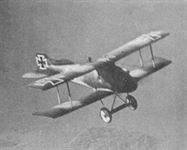 |
J.Herris - Roland Aircraft of WWI /Centennial Perspective/ (9)
|
| Production Roland D.II in flight.
|
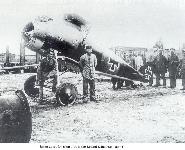 |
Сайт - Pilots-and-planes /WWW/
|
| Taken apart for transport is the Roland D.IIa(Pfal) 359/17.
|
 |
J.Herris - Roland Aircraft of WWI /Centennial Perspective/ (9)
|
Roland D.IIa(Pfal) 374/17 on the Koledziany airfield.
The Roland D.II used the 160 hp Mercedes D.III; the Roland D.IIa used the 180 hp Argus As.III.
|
 |
J.Herris - Roland Aircraft of WWI /Centennial Perspective/ (9)
|
| Roland D.IIa(Pfal) 374/17 at Koledziany airfield on the Eastern Front, possibly as part of the equipment of the Jagdkommando of Fl.Abt.(A)220. In addition to the standard insignia, the lack of a tail skid fairing identifies this aircraft as Pfalz-built. The Roland D.IIa was used extensively on the Eastern Front, where the air combat environment was more permissive than on the Western Front and the D.IIa could make use of its strengths, good speed, strong armament, and a robust structure, against two-seaters while its weaknesses, poor maneuverability and handling and modest climb over 3,000 m due to its Argus engine, were not as important.
|
 |
O.Thetford, P.Gray - German Aircraft of the First World War /Putnam/
|
| Roland D IIa 478/17 at the Kaiserdamm factory 7 February 1917.
|
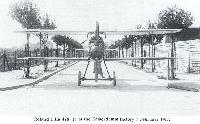 |
Сайт - Pilots-and-planes /WWW/
|
| Roland D IIa 478/17 at the Kaiserdamm factory 7 February 1917.
|
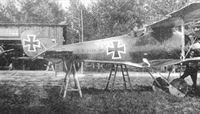 |
J.Herris - Roland Aircraft of WWI /Centennial Perspective/ (9)
|
| Roland D.IIa(Pfalz) 713/16 of Flieger-Abteilung 21, Eastern Front. Some Pfalz-built aircraft had a faired tail skid.
|
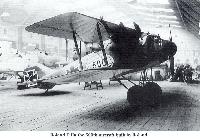 |
Сайт - Pilots-and-planes /WWW/
|
| This Roland D.IIa, completed the morning of 7 Feb. 1917, was the 500th Roland airplane built during the war.
|
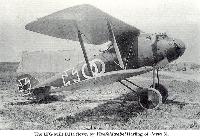 |
Сайт - Pilots-and-planes /WWW/
|
| The LFG-built D.IIa flown by Vizefeldwebel Harling of Jasta 31.
|
 |
J.Herris - Roland Aircraft of WWI /Centennial Perspective/ (9)
|
| Roland D.IIa serving at the front.
|
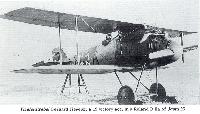 |
Сайт - Pilots-and-planes /WWW/
|
| 19-victory ace Vzfw. Gerhard Fieseler in the cockpit of Lt. Ahelfeld's Roland D.IIa of Jasta 25 in Macedonia. Jasta 25 Roland fighters were normally identified by the initial of the pilot's last name; here, 'A' for Ahelfeld. Fieseler's aircraft would most likely have had an 'F' for identification. After the war Fieseler started his own aircraft company; his most famous product was the Fi-156 Fieseler Storch (Stork) known for its exceptional low speed flying qualities and ability to make very short landings and take-offs.
|
 |
J.Herris - Roland Aircraft of WWI /Centennial Perspective/ (9)
|
| Roland D.IIa of Vzfw. Paul Raetsch of Jasta 32 wears a macabre skull and bones on its spinner.
|
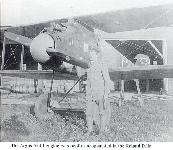 |
Сайт - Pilots-and-planes /WWW/
|
| The Argus As.III engine was neatly encapsulated in the Roland D.IIa.
|
 |
J.Herris - Roland Aircraft of WWI /Centennial Perspective/ (9)
|
| Roland-built D.IIa on the Eastern Front with a Pfalz-built D.II in the right background.
|
 |
J.Herris - Roland Aircraft of WWI /Centennial Perspective/ (9)
|
| Roland D.IIa number 17 at Jastaschule I at Valenciennes. The number was painted yellow.
|
 |
J.Herris - Roland Aircraft of WWI /Centennial Perspective/ (9)
|
| Roland D.IIa number 17 at Jastaschule I at Valenciennes. The number was painted yellow.
|
 |
J.Herris - Roland Aircraft of WWI /Centennial Perspective/ (9)
|
| This Roland D.IIa interests the visiting officers.
|
 |
J.Herris - Roland Aircraft of WWI /Centennial Perspective/ (9)
|
| Roland D.IIa "S" of Jasta 25 in Macedonia is inspected by a group of curious officers.
|
 |
Журнал - Flight за 1918 г.
|
| Roland D.IIa, at Adlershof during Winter 1916-1917
|
 |
J.Herris - Roland Aircraft of WWI /Centennial Perspective/ (9)
|
"Роланд" D.II, построенный на заводе LFG.
Roland D.IIa built by Roland wears the standard Roland factory finish devoid of serial numbers. However, data is stenciled below the cockpit. Above the rigging datum line is Leergewicht 600 kg (Empty weight 600 kg); below the datum line is Zul. Nutzlast bei vollem Tank 167 kg (Permissible useful load with full tank 167 kg).
|
 |
J.Herris - Roland Aircraft of WWI /Centennial Perspective/ (9)
|
| At 44 years old, Lt. Friedrich N. Guttler was one of the oldest fighter pilots and was, of course, known as 'Papa' to the other pilots of his unit, Jasta Ober Ost on the Eastern Front. Here he is in the cockpit of his Roland-built D.IIa.
|
 |
J.Herris - Roland Aircraft of WWI /Centennial Perspective/ (9)
|
| 19-victory ace Vzfw. Gerhard Fieseler in the cockpit of his Roland D.IIa of Jasta 25 in Macedonia. A small windscreen is fitted on each side of the central pylon; the one at right has a small hole for aiming the guns. The bars in front of the windscreens mounted the rear gunsights. The large instrument is the altimeter.
|
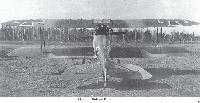 |
Сайт - Pilots-and-planes /WWW/
|
| LFG-built Roland D.IIa.
|
 |
Сайт - Pilots-and-planes /WWW/
|
| Roland D.IIa, at Adlershof during Winter 1916-1917
|
 |
J.Herris - Roland Aircraft of WWI /Centennial Perspective/ (9)
|
| Roland D.IIa "K"of Jasta 25 in Macedonia is ready for take-off.
|
 |
J.Herris - Roland Aircraft of WWI /Centennial Perspective/ (9)
|
| The crest on the side of this Roland D.IIa is the Municipal Wappen (coat-of-arms) of the city of Halle an der Saale in southern Germany, in what is now Saxony-Anhalt. The stars and crescent moon were red on a white shield.
|
 |
J.Herris - Roland Aircraft of WWI /Centennial Perspective/ (9)
|
| Roland D.IIa(Pfal) Silberfisch dismantled for transport.
|
 |
J.Herris - Roland Aircraft of WWI /Centennial Perspective/ (9)
|
| Jasta 25's LFG Roland D II single seat fighters lined up on their Catnatlarzi base in Macedonia during 1917. First flown in October 1916, the twin 7.92mm Spandau armed D II was built in far greater quantities than either of the company's D I or D III designs. Like the D I, the D II used a 160hp Mercedes D III that gave a top level speed of 105mph at sea level. Entering service in early 1917, a total of around 300 D IIs are believed to have been built, both by LFG and Pfalz. The machine was not unconditionally loved by its pilots, who found it particularly sensitive, especially in the yawing plane. Incidentally, this image, showing as it does no less than ten D IIs, goes some way to refute the often made claim that no unit seems to have been exclusively D II-equipped. The individual letters were the first initials of the pilots' last names. All are Roland-built except the last in line appears to be built by Pfalz.
|
 |
J.Herris - Roland Aircraft of WWI /Centennial Perspective/ (9)
|
| Roland D.IIa fighters of Jasta 25 lined up in Macedonia.
|
 |
J.Herris, J.Leckscheid - Fokker Aircraft of WWI. Vol.3: Early Biplane Fighters /Centennial Perspective/ (53)
|
| The equipment of Kest 4b was progressively upgraded, and by 1 June 1917, the first Roland D.II arrived. Six of these aircraft replaced the oldest fighters and took center stage here, and when this photo was taken around July or August, only three Fokker D.III remained with the unit. Seen from right to left are: Fokker D.III 1583/16 Max, 1593/16, and 1638/16. The "Iron Cross" wheel cover marking was not carried over to the Roland and Albatros fighters. Three Albatros D.III complete the distant end of the lineup, which shows the opposite direction of the airfield at Freiburg. By 1 September, the last of the Fokker single-seaters had been given up by the unit.
|
 |
J.Herris - Roland Aircraft of WWI /Centennial Perspective/ (9)
|
| Roland D.IIa in the foreground and two Mercedes-engined Roland D.II fighters in th background. The two nearest fighters were built by Roland; the fighter in the background has no camouflage on its fuselage and may be Pfalz built.
|
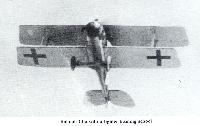 |
Сайт - Pilots-and-planes /WWW/
|
| Dramatic view of a Roland D.IIa in Bulgarian service in 1918 as indicated by the late-style insignia.
|
 |
J.Herris - Roland Aircraft of WWI /Centennial Perspective/ (9)
|
| Roland D.IIa fighters in the field in Bulgarian service. The aircraft served in typical factory camouflage and markings for German fighters. Fast and well-armed, the Roland D.II/IIa was able to intercept Allied two-seaters with some success but was significantly inferior to the best Allied fighters like the Spad 13 and SE.5a.
|
 |
Журнал - Flight за 1918 г.
|
| The curious body of the German Roland single-seater chaser biplane. The centre sections of the wings are left in place, and show where the planes are attached. The top plane, it will be noticed, is attached to the top of the fuselage. Note the balanced rudder and elevators.
|
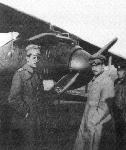 |
А.Александров, Г.Петров - Крылатые пленники России
|
| (КПР 72а)
|
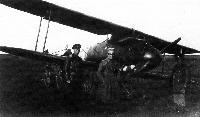 |
А.Александров, Г.Петров - Крылатые пленники России
|
| (КПР 72б)
|
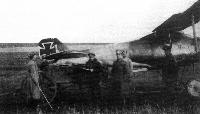 |
А.Александров, Г.Петров - Крылатые пленники России
|
| (КПР 72в)
|
 |
А.Александров, Г.Петров - Крылатые пленники России
|
| (КПР 73)
|
 |
А.Александров, Г.Петров - Крылатые пленники России
|
| (КПР 74)
|
 |
J.Herris - Roland Aircraft of WWI /Centennial Perspective/ (9)
|
| (КПР 75)
|
 |
J.Herris - Roland Aircraft of WWI /Centennial Perspective/ (9)
|
| Pfalz-built Roland D.IIa (w/n 539) captured by the Russians after being shot down on Sept. 9, 1917 by Poruchik (Lieutenant) Alexander Sveshnikov of the Russian 7th Corps air detachment, 2nd fighting air group. The pilot escaped back to German lines. The broad white marking along the fuselage side is distinctive.
|
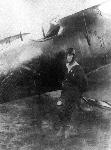 |
А.Александров, Г.Петров - Крылатые пленники России
|
| (КПР 76)
|
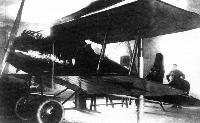 |
А.Александров, Г.Петров - Крылатые пленники России
|
| (КПР 77)
|
 |
J.Herris - Roland Aircraft of WWI /Centennial Perspective/ (9)
|
| Roland D.IIa fighters in storage waiting distribution to front-line units.
|
 |
J.Herris - Aviatik Aircraft of WWI /Centennial Perspective/ (10)
|
| An Aviatik C.II in the center background in a hangar at Brest-Litovsk on the Eastern Front.
|
 |
J.Herris - Roland Aircraft of WWI /Centennial Perspective/ (9)
|
| Scenes of Roland D.II fighters at Brest-Litovsk on the Eastern Front. The German Army captured the city in 1915 and at the time of these photos it was a center for aircraft distribution and aviation training behind the front. At right is a hangar with Roland D.II / D.IIa fighters and Albatros C.III reconnaissance aircraft. Inset clearly shows "W" in two colors on a D.IIa.The air combat environment in the east was much more permissive than the Western Front, which had a much higher density of first-rate combat aircraft. This enabled the Germans to find useful service for mediocre aircraft like the Roland D.II and D.IIa.
|
 |
J.Herris - Roland Aircraft of WWI /Centennial Perspective/ (9)
|
| The Mercedes D.III engine removed from a D.II reveals details of the Roland's structure.
|
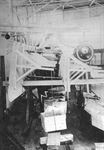 |
J.Herris - Roland Aircraft of WWI /Centennial Perspective/ (9)
|
| Roland D.II in a structural test rig at the factory.
|
 |
J.Herris - Roland Aircraft of WWI /Centennial Perspective/ (9)
|
| View from the cockpit of a D.II with engine removed shows details of the structure and guns.
|
 |
J.Herris - Roland Aircraft of WWI /Centennial Perspective/ (9)
|
| There was at least one in every unit; Pinkert of Jasta 25 in Macedonia does a head-stand in his Roland D.IIa.
|
 |
J.Herris - Roland Aircraft of WWI /Centennial Perspective/ (9)
|
| Roland D.II being recovered after a pilot's 'head-stand'.
|
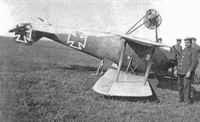 |
J.Herris - Roland Aircraft of WWI /Centennial Perspective/ (9)
|
| The pilots field of view forward and downward from the Roland D.II was little better than that from the C.II with similar results; the landing flair could not be judged well and landing accidents were common.
|
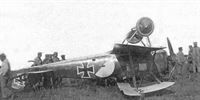 |
J.Herris - Roland Aircraft of WWI /Centennial Perspective/ (9)
|
| Over-turned D.II with unusual half-circle marking.
|
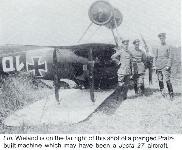 |
Сайт - Pilots-and-planes /WWW/
|
| Ltn. Wieland is on the far right of this shot of a pranged Pfalz-built machine which may have been a Jasta 27 aircraft.
|
 |
J.Herris - Roland Aircraft of WWI /Centennial Perspective/ (9)
|
| Roland-built D.IIa after a landing accident shows its underside details. Although embarrassed, pilot Vzfw. Paul Raetsch of Jasta 32 fortunately appears unhurt.
|
 |
J.Herris - Roland Aircraft of WWI /Centennial Perspective/ (9)
|
| Jasta 27 mishap; Unteroffizier Stein stalled and crashed from 30 m during takeoff. Despite breaking the tail off his sturdy Roland D.IIa, Stein was not injured in the crash.
|
 |
J.Herris - Roland Aircraft of WWI /Centennial Perspective/ (9)
|
| Crashed Roland D.IIa of Jasta 25 in Macedonia; the abashed pilot is photographed with the evidence.
|
 |
J.Herris - Roland Aircraft of WWI /Centennial Perspective/ (9)
|
| A Bulgarian Roland D.IIa after a landing accident is used as a background for a group photo.
|
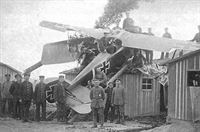 |
J.Herris - Roland Aircraft of WWI /Centennial Perspective/ (9)
|
| This Roland D.II(Pfal) with "J" marking behind the insignia is in an embarrassing situation. One wonders how the pilot could find this building so precisely when it is surrounded by so much open terrain.
|
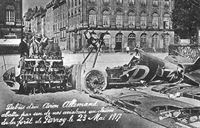 |
J.Herris - Roland Aircraft of WWI /Centennial Perspective/ (9)
|
| French postcard of the downed Roland D.II of Uffz. Tolischuss, Kest 3, made POW May 23, 1917.
|
 |
Журнал - Flight за 1918 г.
|
| The upper plane of the Roland D. II.
|
 |
Журнал - Flight за 1918 г.
|
| One of the main plane ribs of the Roland D. II.
|
 |
Журнал - Flight за 1918 г.
|
| Diagram of "bump" supporting top plane and radiator on the Roland D. II.
|
 |
Журнал - Flight за 1918 г.
|
| The quick-release bolt for attaching main planes on the Roland D. II.
|
 |
Журнал - Flight за 1917 г.
|
| The Roland chaser D. II.
|
 |
O.Thetford, P.Gray - German Aircraft of the First World War /Putnam/
|
|
|
 |
R.Kosin - The German Fighter since 1915 /Putnam/
|
| LFG Roland D IIa
|
 |
J.Herris - Roland Aircraft of WWI /Centennial Perspective/ (9)
|
| Roland D.II
|
 |
J.Herris - Roland Aircraft of WWI /Centennial Perspective/ (9)
|
| Roland D.II
|
 |
J.Herris - Roland Aircraft of WWI /Centennial Perspective/ (9)
|
| Roland D.II
|
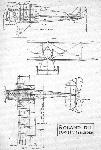 |
Журнал - Flight за 1918 г.
|
| THE ROLAND SINGLE-SEATER CHASER, D. II. - Plan, side and front elevations to scale.
|
 |
В.Кондратьев - Самолеты первой мировой войны
|
| Roland D.II
|







































































































































